Sun’s T2000 “Coolthreads” Server: First Impressions and Experiences
by Johan De Gelas on March 24, 2006 12:05 AM EST- Posted in
- IT Computing
Introducing the T2000 server
The Sun fire T2000 is more than just a server with the out-of-the-ordinary UltraSPARC T1 CPU. 16 DIMM slots support up to 32Gbytes of DDR2-533 memory. Internally, there is room for 4 SAS 73GB, 2.5" disks. Don't confuse these server grade disks with your average notebook 2.5" disks. These are fast 10.000 RPM Serial Attached SCSI (SAS) hard disk drives. With SAS, you can also use SATA disks, but you will be probably limited to 7200 RPM disks.
The T2000 in practice
The T2000 is a headless server. To get it up and running, you first access the serial management port with Hyperterminal or a similar tool. The necessary RJ-45 serial cable was included with our server.
The console software offers you plenty of different commands to administer the T2000 server.
RAS
Traditionally, Sun systems have been known for excellent RAS capabilities. Besides the obligatory redundant hot swappable fans, the T2000 also incorporates dual redundant hot swap Power.
Sun also claims that the T1 CPU excels in RAS. See below for a comparison between the RAS capabilities of the current Xeon and UltraSparc T1 (source: Sun).
In fact, current Intel production Xeon Paxville processor - which find a place in similarly priced servers as the T2000 - do not support Parity checking on the L1 I-Cache - Tag. Intel also pointed out that the upcoming Woodcrest CPU will have improved RAS features.
So, it seems that right now, the Ultrasparc T1 outshines its x86 competitors.
The T2000 also features Chipkill(memory), which complements standard ECC. According to Sun, this provides twice the level of reliability of standard ECC. Chipkill detects failed DRAM, then DRAM Sparing reconfigures a DRAM channel to map out failed DIMM.
Each of UltraSPARC T1's 4x memory controllers implements background error scanner/scrubber to reduce multi-nibble errors - programmable to adjust frequency of error scanning.
When it comes to RAS, especially the cheaper T2000 (with 1 GHz CPU), there is not an equal at their price point in the server market.
The Sun fire T2000 is more than just a server with the out-of-the-ordinary UltraSPARC T1 CPU. 16 DIMM slots support up to 32Gbytes of DDR2-533 memory. Internally, there is room for 4 SAS 73GB, 2.5" disks. Don't confuse these server grade disks with your average notebook 2.5" disks. These are fast 10.000 RPM Serial Attached SCSI (SAS) hard disk drives. With SAS, you can also use SATA disks, but you will be probably limited to 7200 RPM disks.
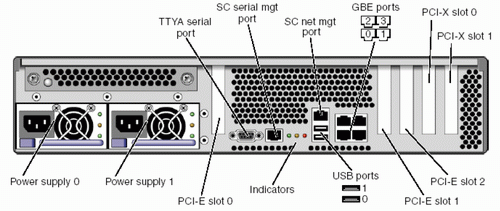
The T2000 in practice
The T2000 is a headless server. To get it up and running, you first access the serial management port with Hyperterminal or a similar tool. The necessary RJ-45 serial cable was included with our server.
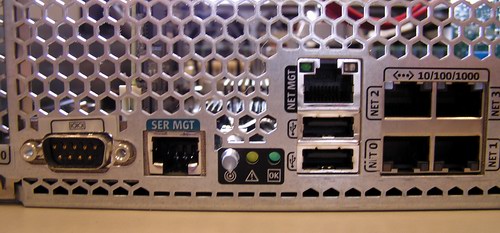
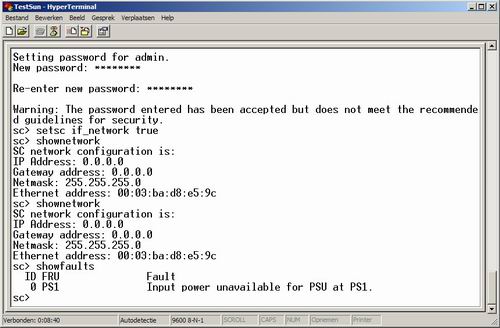
The console software offers you plenty of different commands to administer the T2000 server.
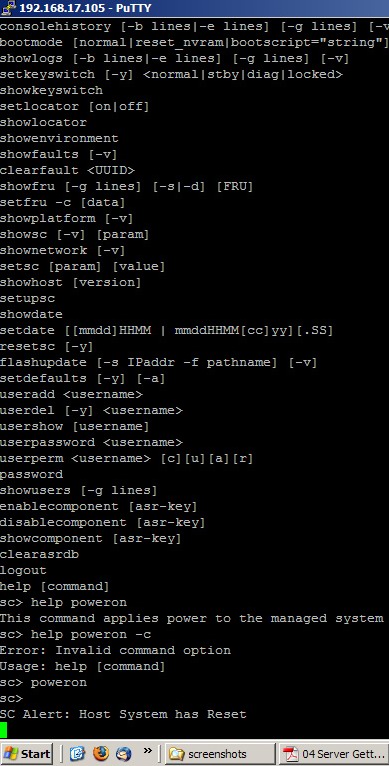
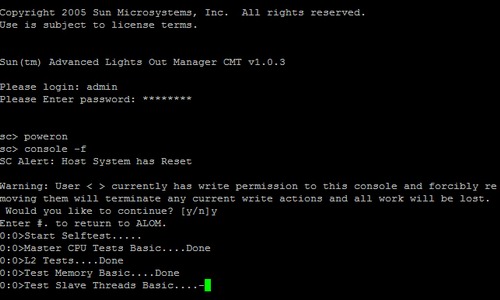
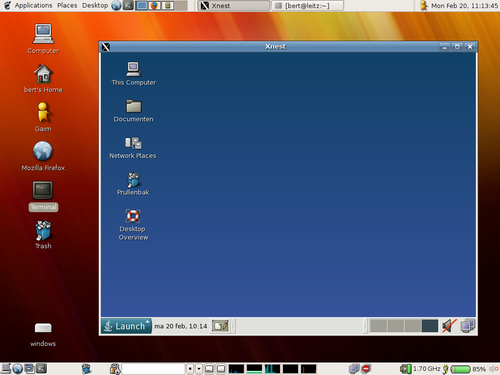
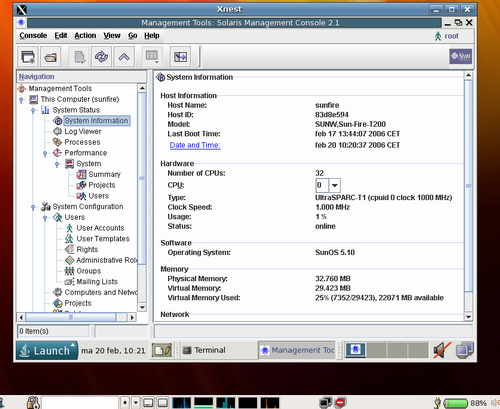
RAS
Traditionally, Sun systems have been known for excellent RAS capabilities. Besides the obligatory redundant hot swappable fans, the T2000 also incorporates dual redundant hot swap Power.
Sun also claims that the T1 CPU excels in RAS. See below for a comparison between the RAS capabilities of the current Xeon and UltraSparc T1 (source: Sun).
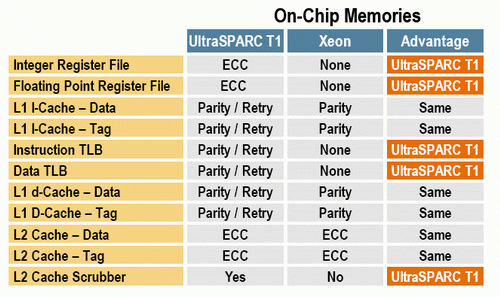
In fact, current Intel production Xeon Paxville processor - which find a place in similarly priced servers as the T2000 - do not support Parity checking on the L1 I-Cache - Tag. Intel also pointed out that the upcoming Woodcrest CPU will have improved RAS features.
So, it seems that right now, the Ultrasparc T1 outshines its x86 competitors.
The T2000 also features Chipkill(memory), which complements standard ECC. According to Sun, this provides twice the level of reliability of standard ECC. Chipkill detects failed DRAM, then DRAM Sparing reconfigures a DRAM channel to map out failed DIMM.
Each of UltraSPARC T1's 4x memory controllers implements background error scanner/scrubber to reduce multi-nibble errors - programmable to adjust frequency of error scanning.
When it comes to RAS, especially the cheaper T2000 (with 1 GHz CPU), there is not an equal at their price point in the server market.










26 Comments
View All Comments
drw - Friday, March 24, 2006 - link
Based on the kernel versions listed, I assume that a 32-bit distro was used?If so, am curious how a 64-bit distro would compare, as both Apache and MySQL benefit greatly by 64 bit.
JohanAnandtech - Friday, March 24, 2006 - link
Fully 64 bit. uname -a clearly indicates 64 bitdefter - Friday, March 24, 2006 - link
Dual Opteron 275HE had 5% higher power consumpion (198W vs 188W), but it was 5-30% faster (depending wherever or not gzip was used). These results would suggest that dual Opteron has won performance/watt battle in this benchmarks.
Pricing is also quite important. What's the price for dual Opteron 275HE server with 8GB of memory? About $5000-7000?
PeterMobile - Friday, March 24, 2006 - link
Definitely interesting to see a 3. party review of the T2000. I think it could also be interesting to compare both the Sun machine and the x86 servers to an IBM p5 510Q. That's a 4-way 1.5 GHz Power5+, which including 4 GB RAM and 2 Ultra320 disks lists for $8,536.Calin - Friday, March 24, 2006 - link
I saw there is almost no loss of performance for compressing data... how about encrypting it?cxl - Friday, March 24, 2006 - link
Actually, MOD operation can be very important for servers, as it is basis for any hashing operations, commonly used in many server applications. E.g. to identify variable in a script, interpreters routinely use hashtables.
114 cycles per MOD operation is performance disaster.
Calin - Friday, March 24, 2006 - link
The performance in the tested configuration was quite good - I wonder how other benchmarks and maybe other "twists" of the benchmark tested would look like.cosmotic - Friday, March 24, 2006 - link
Did you mean certainly NOT least?
JohanAnandtech - Friday, March 24, 2006 - link
definitely ... Fixed. Just checking if you read it carefully :-)cosmotic - Friday, March 24, 2006 - link
Why no graphs? It makes reading benchmarks SO much easier.